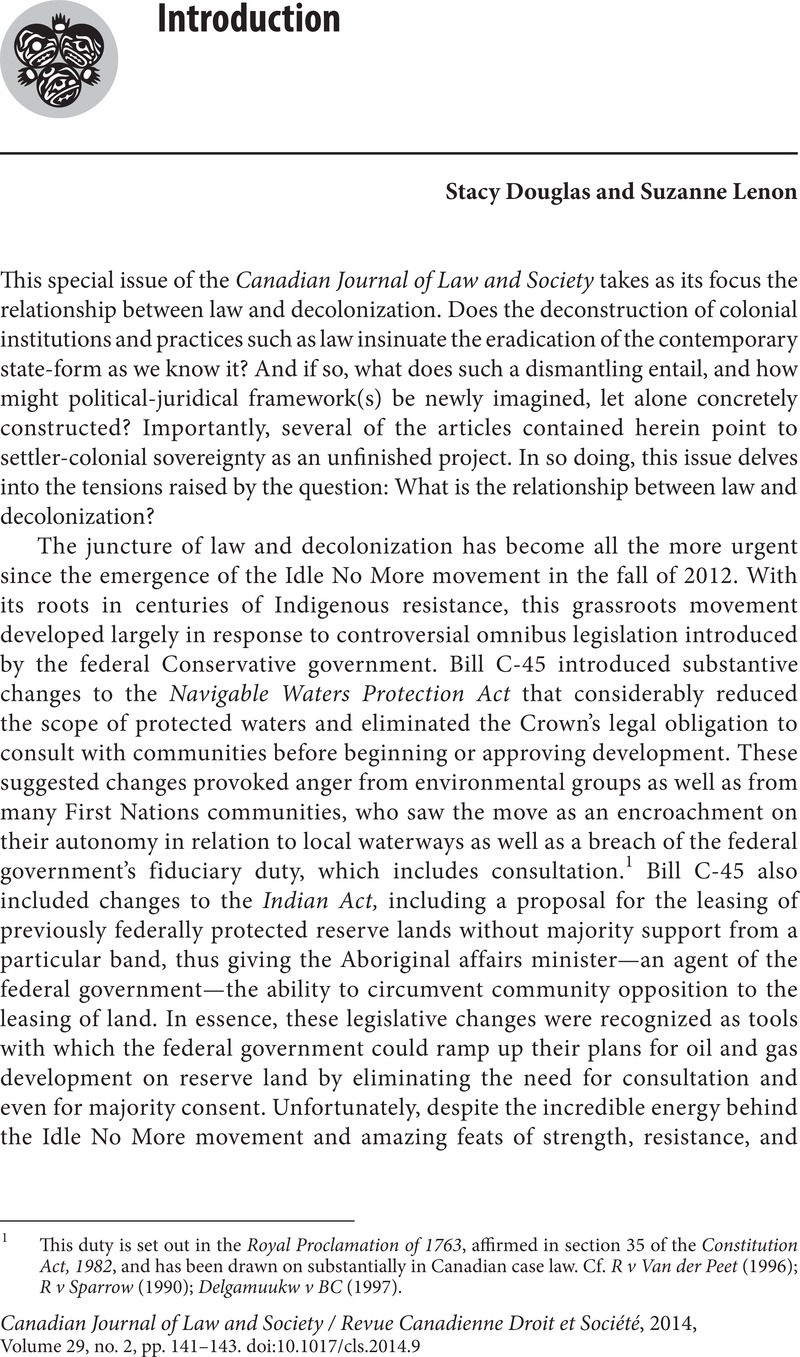Published online by Cambridge University Press: 18 July 2014

1 This duty is set out in the Royal Proclamation of 1763, affirmed in section 35 of the Constitution Act, 1982, and has been drawn on substantially in Canadian case law. Cf. R v Van der Peet (1996); R v Sparrow (1990); Delgamuukw v BC (1997).
2 Some examples are: the hunger strike by Chief Theresa Spence of Attawapiskat First Nation; Idle No More round dances and teach-ins; and the December 10, 2012 and January 11, 2013 National Days of Action. See also the edited volume by the Kino-nda-niimi Collective, The Winter We Danced: Voices from the Past, the Future, and the Idle No More Movement (Winnipeg: ARP Books, 2014).
3 Wolfe, Patrick, “Structure and Event: Settler Colonialism and the Question of Genocide,” in Empire, Colony, Genocide: Conquest, Occupation, and Subaltern Resistance in World History, edited by Dirk Moses, A. (Oxford: Berghahn Books, 2008), 102–32.Google Scholar
4 Palmater, Pamela, “Why Are We Idle No More?,” Ottawa Citizen, December 28, 2012.Google Scholar
5 Tuck, Eve and Wayne Wang, K., “Decolonization is Not a Metaphor,” Decolonization: Indigeneity, Education & Society 1, no. 1 (2012): 3.Google Scholar